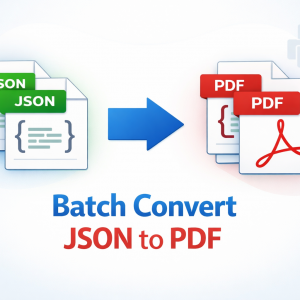Workplaces are often filled with hazards, and in the manufacturing industry, the risks can be even higher. One system designed to control these risks is the permit to work system. It acts like a structured safety plan, ensuring that dangerous tasks are carried out only when the right precautions are in place. However, despite its importance, history shows us many cases where this system has failed. These failures have led to serious accidents, injuries, and in some cases, fatalities.
Before we dive into the lessons learned, it is important to understand that safety education plays a vital role in preventing such incidents. Training programs such as NEBOSH IGC are highly recommended in industries where hazards are unavoidable. This type of qualification not only teaches safety management but also gives workers the skills to identify flaws in permit systems and correct them before accidents occur.
Why Permit to Work Systems Matter in Manufacturing
The manufacturing sector involves high-risk activities such as working at heights, dealing with electricity, handling chemicals, confined space entry, and heavy machinery operation. Each of these tasks can cause harm if proper procedures are ignored. The permit to work system ensures that:
- A task is carefully planned before it begins
- Hazards are clearly identified
- Workers have the necessary protective equipment
- Communication is clear between all departments
- No conflicting activities are carried out at the same time
When followed correctly, this system reduces risks significantly. But when it fails, the consequences can be devastating.
Common Causes of Permit to Work Failures
Over time, investigation reports have shown patterns of mistakes that lead to failures in the permit to work system. Understanding these mistakes helps organizations avoid repeating them.
1. Poor Communication
One of the biggest reasons for failure is poor communication. For example, when maintenance teams start working on a machine without knowing another team is testing the same equipment, accidents can occur. The absence of clear communication channels often leads to overlap of tasks.
2. Inadequate Training
Workers who are not fully trained may not understand the importance of the permit system. In manufacturing plants, supervisors sometimes issue permits quickly without explaining the actual hazards involved. Without proper knowledge, workers treat the permit as just a piece of paper rather than a safety tool.
3. Lack of Supervision
Even when a permit is issued, supervisors must check that workers follow the conditions mentioned. Accidents often occur when supervisors assume that workers know what to do, instead of monitoring them on-site.
4. Incorrect Hazard Identification
In many cases, hazards are either underestimated or missed altogether. For example, a team may focus on the electrical risks of a task while ignoring the potential chemical risks nearby. Failure to identify all hazards results in incomplete safety measures.
5. Pressure to Save Time and Costs
In the fast-paced manufacturing industry, deadlines often put pressure on workers. When managers push teams to complete tasks quickly, shortcuts are taken, and permits are sometimes ignored or signed off without proper checks.
Real-Life Anecdote: A Lesson from a Manufacturing Plant
In one case, a worker was assigned to clean a chemical tank. A permit to work was issued, but it failed to mention the possibility of toxic fumes inside the tank. The worker entered without the correct respiratory protection. Within minutes, he collapsed due to inhaling dangerous gases. Thankfully, he survived after being rescued, but this incident highlighted the dangers of incomplete permits. It also showed why training such as NEBOSH IGC is so valuable—workers trained under such programs know how to double-check and challenge incomplete permits.
Steps to Prevent Permit to Work Failures
Step 1: Improve Training
All employees, from management to operators, must undergo proper safety training. Training should not just cover how to fill in permits but also why each condition is important. Programs similar to NEBOSH Safety Courses provide a strong foundation for this purpose.
Step 2: Strengthen Communication
Before a task starts, every team involved should be briefed together. Tools such as digital permit systems, radios, and daily coordination meetings reduce the chances of miscommunication.
Step 3: Conduct Hazard Identification Workshops
Instead of leaving hazard identification to one person, involve the entire team. Workers on the ground often notice risks that management overlooks. A joint discussion before work begins ensures all hazards are recognized.
Step 4: Increase Supervision
Supervisors must be present during critical tasks. Their job is to verify that conditions written in the permit are actually being followed. Random checks during tasks also keep workers alert and careful.
Step 5: Avoid Rushing the Process
Organizations must develop a culture where safety is never compromised for speed. Even if a task is delayed, completing it safely is more valuable than risking lives to meet a deadline.
Step 6: Regular Audits and Reviews
Permits should not be treated as one-time documents. Regular reviews and audits of the permit to work system ensure it evolves with changing risks in the workplace.
Psychological Side of Permit Failures
It’s not always technical errors that cause problems. Human behavior plays a huge role as well. Many accidents happen because workers feel overconfident or think that “nothing will happen this time.” Repeatedly skipping safety steps creates a dangerous habit. To counter this, organizations need to encourage workers to speak up and stop unsafe work without fear of punishment.
Building a Culture of Responsibility
The most effective way to prevent failures is to create a safety culture where everyone feels responsible. This means managers should lead by example, supervisors must take accountability, and workers should feel empowered to raise concerns. The culture of safety is not built overnight but through consistent actions, trust, and respect.
Why Training and Certifications Matter
Workplace hazards will always exist in manufacturing, but strong education ensures workers know how to control them. Qualifications such as NEBOSH IGC are globally recognized for building competency in health and safety management. They prepare employees to handle hazards, manage risks, and strengthen systems like permit to work. Organizations that invest in such training not only reduce accidents but also increase productivity and employee confidence.
Read more: NEBOSH Safety Courses
Conclusion
Permit to work failures in manufacturing industries have caused serious injuries and even deaths. Most of these accidents were preventable. The lessons are clear: communication must improve, training must be strengthened, supervision must be active, hazards must be correctly identified, and deadlines should never override safety. By applying these steps and promoting a culture of responsibility, organizations can protect their workers while maintaining efficiency.










